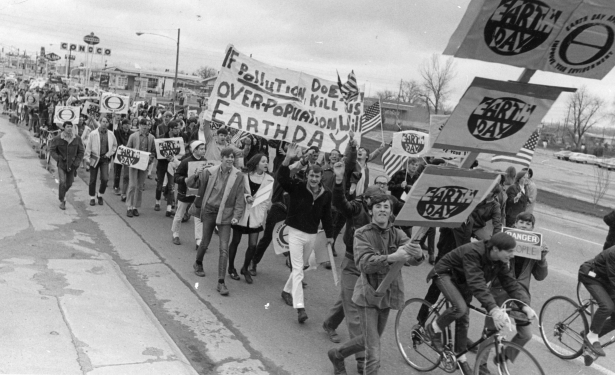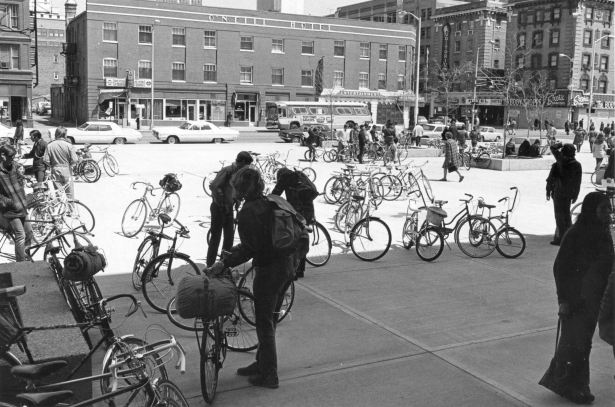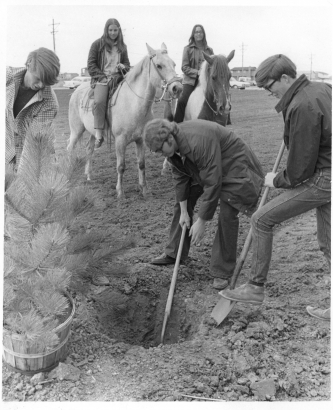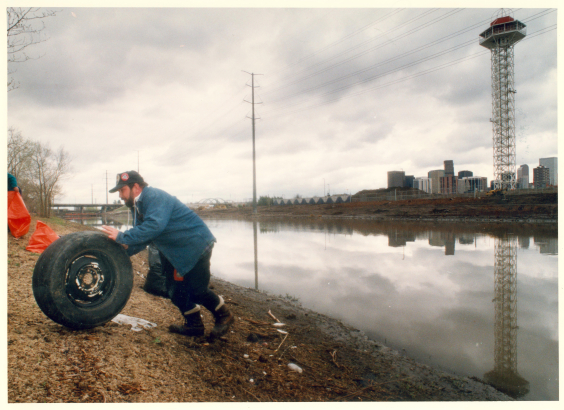April 22 marks the 45th anniversary of Earth Day. On this day in 1970, over 20 million Americans attended demonstrations, protesting environmental pollution and demanding action to protect their habitat from further harm.
Denver, as it turns out, was a significant site for Earth Day 1970, attracting the holiday's founder to attend a 12-hour teach-in held at the city's Currigan Hall.
The man behind Earth Day was U.S. Senator Gaylord Nelson (D-Wisconsin), who was active in the environmental movement from early on. In 1969, after seeing three million gallons of crude oil escape from an oil rig blowout in the Santa Barbara Channel, Senator Nelson created Earth Day as a way to thrust environmental issues into the national spotlight.
Senator Nelson was a panelist at the Currigan teach-in, along with Mayor McNichols and Governor Love. The Rocky Mountain News described the event the following day:
It drew a milling, restless crowd of up to 3,500 young people from junior high school age on up, with a goodly share of adults sprinkled in . . . Many listened attentively to the more than two dozen speakers and panelists . . . Others roamed the big building socializing, littering or looking at colorful exhibits which dealt with all forms of alleged pollution, from smoking, to having too many babies, to capitalism. Still others stood before microphones in the aisles and took verbal potshots at the speakers.
The Rocky Mountain News also reported that during his speech, Senator Nelson drew intermittent cheers and applause from the audience when he stated that the "pill" was an inadequate form of birth control and that the federal government should put a stop to the use and production of all disposable bottles. The cause his speech stressed most forcefully, however, was the establishment of a federally-subsidized environmental program and the formation of an "ecology congress" to regulate the use of land, water, minerals, and pesticides. Nelson's speech drew a standing ovation.
In December of 1970, Congress authorized the formation of the U.S. Environmental Protection Agency to manage environmental issues.
Today, many consider Earth Day 1970 as having been impactful enough to have started the modern environmental movement in the United States. It's interesting to note the role Denver played in this milestone.
DID YOU KNOW? Since 1960, the Denver Public Library's Western History/Genealogy department (Central Library, Level 5) has been collecting items documenting the U.S. modern environmental movement. The Conservation Collection includes:
- historic journals and magazines (such as Outdoor Life, Journal of Forestry, and Colorado Outdoors)
- books (including an early, bound typescript of what would later become Aldo Leopold's A Sand County Almanac)
- personal papers (including those from conservation movement leaders like Howard Zahniser, Ira Gabrielson, Enos Mills, and Velma Johnston)
- organizational records (including The Wilderness Society, The Student Conservation Association, American Farmland Trust and The Nature Conservancy)









Comments
I love seeing these old
I love seeing these old photos of Denver! Thanks for sharing.
Thank you for reading! Check
Thank you for reading! Check out more Earth Day photos here: https://history.denverlibrary.org/gallery/earth-day-denver-1970